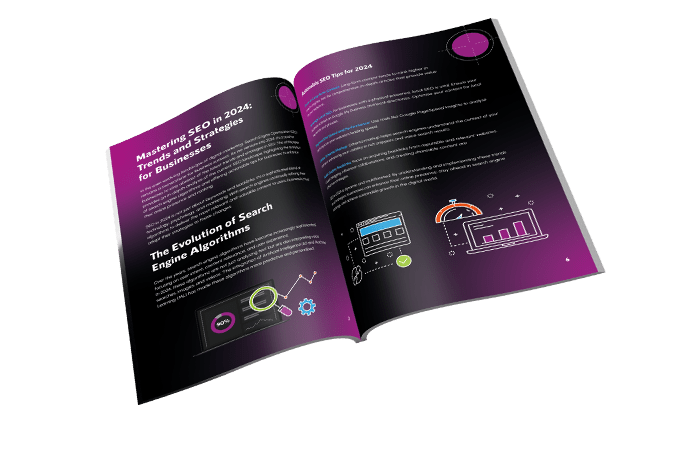News
The Impact of AI on Content Creation: Balancing Technology and Creativity
Technology continues to play a pivotal role in transforming industries. Among the most influential technologies, artificial intelligence (AI) stands out, especially in the realm of content creation. AI tools are revolutionising the way businesses generate, distribute, and manage content, offering unprecedented efficiency and innovation.
However, amidst this technological surge, the essence of human creativity remains irreplaceable.
This article delves into the impact of AI on content creation, the significance of preserving human creativity, and strategies for crafting high-quality content that distinguishes itself in a competitive market.
The Rise of AI in Content Creation
AI has permeated various facets of content creation, from generating written content to creating visuals and managing social media. AI-driven tools like GPT-3, DALL-E, and others have demonstrated remarkable capabilities in producing human-like text and images. Businesses are leveraging these technologies to streamline content production, optimise marketing strategies, and enhance customer engagement.
Automated Content Generation
One of the most prominent applications of AI in content creation is automated content generation. AI-powered platforms can produce articles, blog posts, product descriptions, and more within minutes. For instance, OpenAI’s GPT-3 can generate coherent and contextually relevant text based on minimal input, making it a valuable asset for businesses looking to scale their content operations.
According to a report by MarketsandMarkets, the AI in content creation market is expected to grow from £2.5 billion in 2020 to £8.5 billion by 2026, reflecting the increasing adoption of AI technologies in this sector.
Personalised Content Recommendations
AI is also instrumental in personalising content for users. Algorithms analyse user behaviour, preferences, and interactions to deliver tailored content recommendations. This personalised approach enhances user experience and boosts engagement, which is crucial for businesses aiming to build strong customer relationships. Streaming services like Netflix and Spotify, for example, utilise AI to curate personalised content for their users, significantly contributing to their success.
Enhancing Visual Content
Beyond text, AI is transforming the creation of visual content. Tools like DALL-E can generate unique images from textual descriptions, opening new avenues for creative expression. Moreover, AI-driven design tools like Canva and Adobe Spark assist businesses in creating professional-quality visuals without requiring extensive design expertise. This democratisation of design empowers businesses of all sizes to produce visually appealing content that resonates with their audience.
The Imperative of Human Creativity
While AI offers remarkable capabilities, the importance of human creativity in content creation cannot be overstated. AI-generated content, although efficient, often lacks the nuanced understanding, emotional depth, and unique perspective that human creators bring to the table. Creativity is a distinctly human trait that involves empathy, intuition, and cultural awareness—elements that are challenging for AI to replicate fully.
Emotional Connection and Authenticity
Human-created content tends to establish a stronger emotional connection with the audience. Authenticity and relatability are key factors in content that resonates with users. For instance, a heartfelt blog post or a compelling story-driven advertisement crafted by a human writer can evoke emotions and forge a deeper bond with the audience.
According to a study by Stackla, 86% of consumers consider authenticity a crucial factor when deciding which brands to support.
Cultural Sensitivity and Context
Content creation requires an understanding of cultural nuances and context, which is an area where AI may fall short. Human creators possess the cultural awareness necessary to craft content that is relevant and respectful. This sensitivity is particularly important for businesses operating in diverse markets. A misstep in cultural context can lead to misunderstandings or even backlash, which can be detrimental to a brand’s reputation.
Innovation and Originality
Human creativity drives innovation and originality. While AI can generate content based on existing data and patterns, it may struggle to produce truly original ideas. Innovation often stems from human experiences, imagination, and the ability to think outside the box. Businesses that prioritise human creativity are more likely to develop unique and groundbreaking content that stands out in a crowded marketplace.
Balancing AI and Human Creativity
To leverage the benefits of AI while preserving human creativity, businesses must strike a balance between technology and human input. Here are some strategies for achieving this balance and creating high-quality content that stands out.
Integrating AI as a Support Tool
AI should be viewed as a support tool rather than a replacement for human creators. Businesses can utilise AI to automate repetitive tasks, such as data analysis, content curation, and initial drafts. This allows human creators to focus on more complex and creative aspects of content creation. For instance, AI can handle keyword research and SEO optimisation, enabling writers to concentrate on crafting engaging and impactful content.
Collaborative Content Creation
Encouraging collaboration between AI and human creators can yield exceptional results. AI can provide valuable insights and suggestions, while human creators bring their unique perspectives and creativity to the process. This collaborative approach can enhance the overall quality of content and ensure that it resonates with the target audience. For example, AI can generate a draft of an article, which a human writer can then refine and personalise.
Continuous Learning and Adaptation
AI technologies are continually evolving, and businesses must stay abreast of these advancements. Regularly updating AI tools and training them on the latest data ensures that they remain relevant and effective. Additionally, businesses should invest in ongoing training for their human creators to help them understand and utilise AI tools effectively. This continuous learning and adaptation foster a dynamic and innovative content creation environment.
Emphasising Ethical AI Use
Ethical considerations are paramount when integrating AI into content creation. Businesses must ensure that AI-generated content adheres to ethical standards, such as avoiding plagiarism, respecting intellectual property, and preventing the spread of misinformation. Transparency is also crucial; businesses should disclose when content is AI-generated to maintain trust with their audience.
According to a survey by Edelman, 81% of consumers believe that businesses must be transparent about their use of AI.
Strategies for Creating High-Quality Content
In the age of AI, creating high-quality content that stands out requires a strategic approach. Businesses must leverage AI’s capabilities while prioritising human creativity to produce content that is engaging, authentic, and impactful.
Understanding the Audience
A deep understanding of the target audience is fundamental to creating relevant and compelling content. Businesses should invest in market research to gain insights into their audience’s preferences, pain points, and interests. AI tools can assist in analysing vast amounts of data to identify trends and patterns. However, human creators must interpret these insights to craft content that resonates on an emotional level.
Crafting Compelling Narratives
Storytelling is a powerful tool in content creation. Compelling narratives captivate the audience and convey messages in a memorable way. Human creators excel at weaving stories that evoke emotions and create connections. While AI can assist in generating factual content, human writers should focus on adding depth, personality, and storytelling elements that make the content engaging.
Prioritising Quality over Quantity
In the race to produce content at scale, businesses must not compromise on quality. High-quality content that provides value to the audience is more likely to drive engagement and loyalty. AI can help streamline the content production process, but human editors should ensure that the final output meets the highest standards. Investing in skilled writers, designers, and editors is essential for maintaining content quality.
Embracing Multimedia Content
Incorporating multimedia elements, such as videos, infographics, and interactive content, enhances the overall content experience. AI tools can assist in creating and optimising these elements, but human creativity is crucial in conceptualising and designing them. Businesses should explore various formats to deliver content that caters to different audience preferences and consumption habits.
Measuring and Optimising Performance
Continuous measurement and optimisation are key to content success. AI-powered analytics tools provide valuable insights into content performance, such as engagement metrics, click-through rates, and conversion rates. Businesses should use these insights to refine their content strategies and improve future content. Human creators should interpret the data to identify areas for improvement and implement creative solutions.
The impact of AI on content creation is undeniable, offering businesses unparalleled efficiency and innovation. However, the irreplaceable value of human creativity remains essential in crafting content that resonates, engages, and stands out.
By integrating AI as a support tool, fostering collaboration between AI and human creators, and prioritising ethical and high-quality content, businesses can achieve a harmonious balance between technology and creativity.
In this dynamic landscape, businesses that successfully navigate this balance will be well-positioned to thrive and connect with their audiences in meaningful ways.





The Ultimate Social Media Guide
With the ever-growing power of social media, we use the latest techniques, video, and animation software to craft eye-catching social media assets that make your brand pop. Our designers, wielding Adobe Creative tools, create distinctive animations and graphics to illuminate your brand story and highlight your products or services. Want a unique design? No problem – we also offer bespoke designs to match your brand aesthetic.